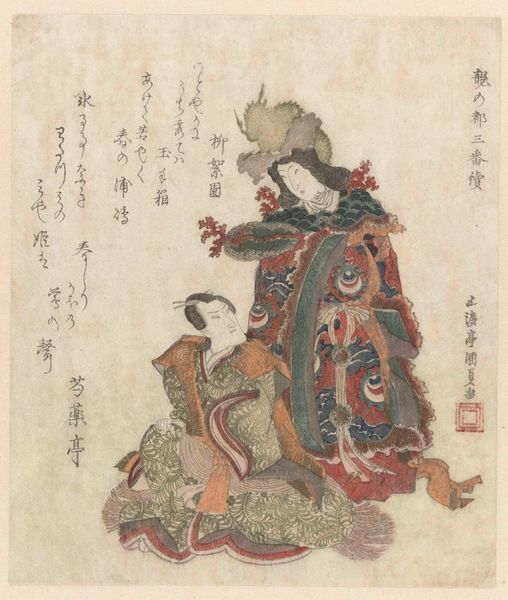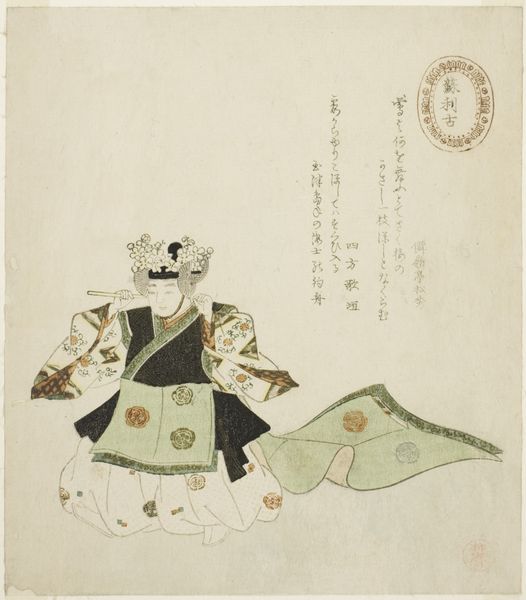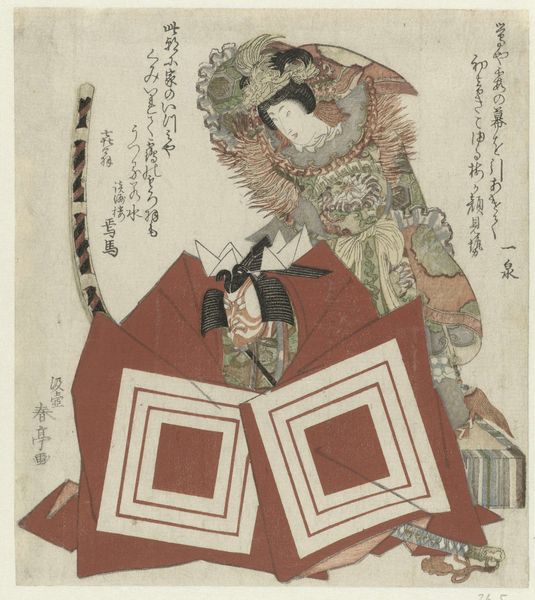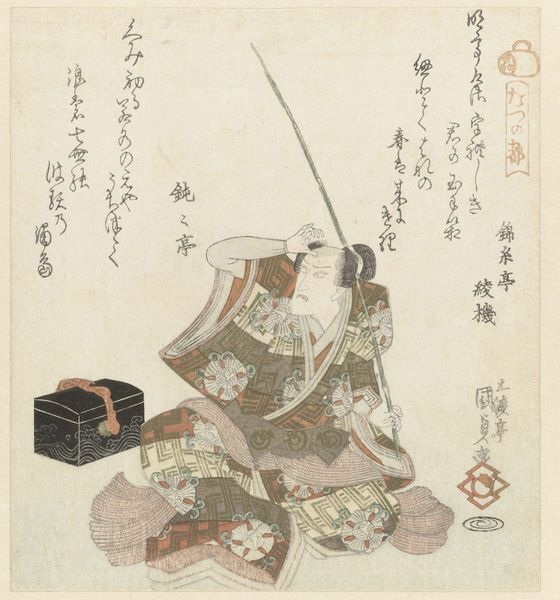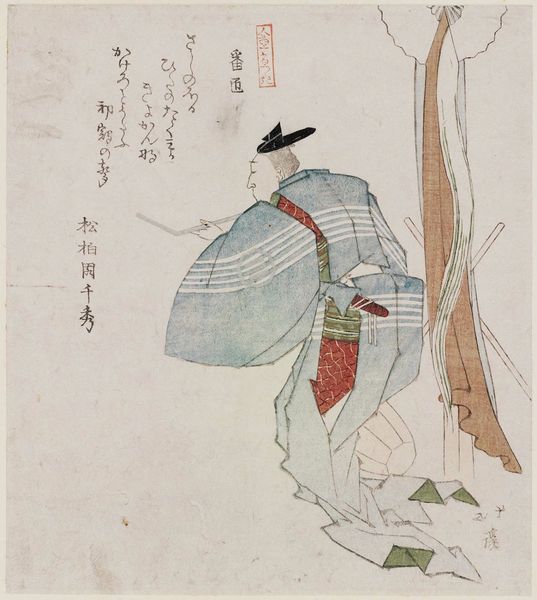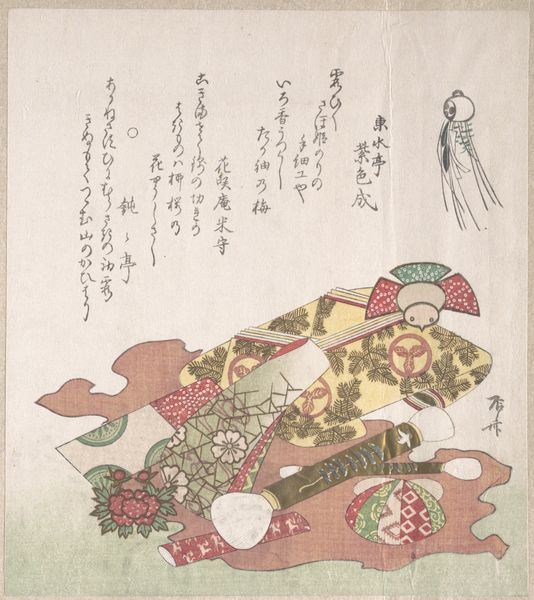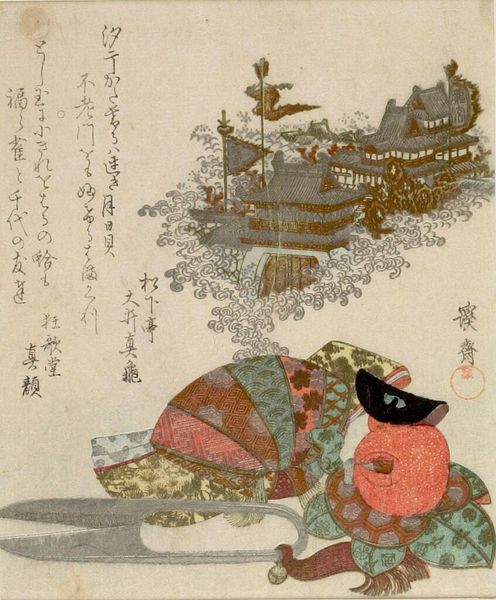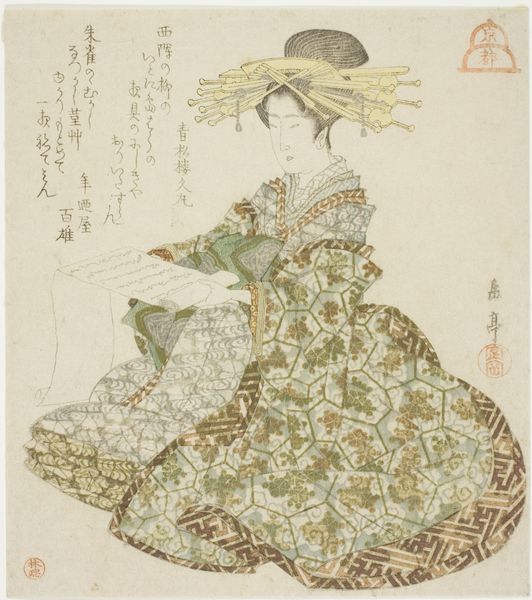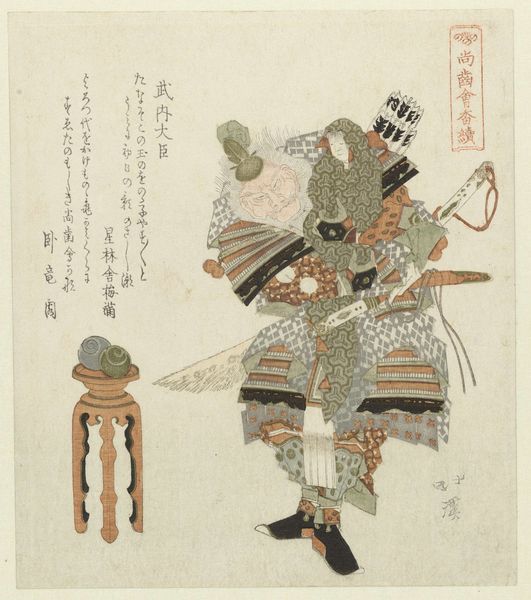![['Scene from a Nō Play', 'Urin Temple'] by Teisai Hokuba 蹄斎北馬](/_next/image?url=https%3A%2F%2Fd2w8kbdekdi1gv.cloudfront.net%2FeyJidWNrZXQiOiAiYXJ0ZXJhLWltYWdlcy1idWNrZXQiLCAia2V5IjogImFydHdvcmtzL2NiMmE0N2Y5LTUxNmQtNDVlMC1hMGQwLWIzMzQ1NGUxZGFkYS9jYjJhNDdmOS01MTZkLTQ1ZTAtYTBkMC1iMzM0NTRlMWRhZGFfZnVsbC5qcGciLCAiZWRpdHMiOiB7InJlc2l6ZSI6IHsid2lkdGgiOiAxOTIwLCAiaGVpZ2h0IjogMTkyMCwgImZpdCI6ICJpbnNpZGUifX19&w=3840&q=75)
painting, watercolor
#
portrait
#
tree
#
narrative-art
#
painting
#
asian-art
#
ukiyo-e
#
watercolor
#
line
#
watercolour illustration
Dimensions: height 209 mm, width 185 mm
Copyright: Rijks Museum: Open Domain
Curator: Let's turn our attention to this intriguing watercolor, "Scene from a Nō Play, Urin Temple," created around 1821 by Teisai Hokuba. It presents an elegant yet sparse composition. Editor: My initial feeling is one of serene theatricality. There's a formality, almost ritualistic, conveyed by the figures and their arrangement within the pictorial space. Curator: Indeed. Hokuba's skillful use of line, particularly evident in the figures' garments and the delicate branches of the flowering tree, speaks volumes about the artist’s technical mastery and the prevailing aesthetics of Ukiyo-e. Think of the labor involved in producing these refined objects. Editor: The cherry blossom is really standing out to me – the visual language surrounding those delicate blooms would have immediately indicated a fleeting beauty, the transient nature of life to the original viewers. Note how its fragility contrasts against the imposing form of the figure on the left. Curator: Absolutely. Hokuba's choice of watercolor allows for subtle gradations in tone, enhancing the overall sense of lightness and ethereal quality. You also see evidence here of block-printing techniques adding textures which highlight, elevate and even comment on class structures in this era of Japanese Art. Editor: Considering the title references a Nō play, the figures, despite their stillness, feel pregnant with unspoken narrative. The covered woman with her fan hints at mystery and a deliberate withholding, and the male figure observes with quiet intensity, all suggesting deeper emotional layers than are immediately apparent. Curator: Ukiyo-e often functioned as both a commodity for consumption by a growing urban class, and as vehicles for cultural memory. Hokuba, though lesser known than some of his contemporaries, was very active in publishing popular art as part of the Katsushika Hokusai school in the early 19th century. Editor: So, reading those symbolic clues allows for the discovery of narrative art that holds, within, many additional layers – ones revealing something about this moment, a feeling almost frozen in time. Curator: Through attention to process and Hokuba's cultural landscape we discover deeper complexities embedded in its creation and meaning. Editor: A great artwork that invites introspection, doesn't it?
Comments
No comments
Be the first to comment and join the conversation on the ultimate creative platform.

